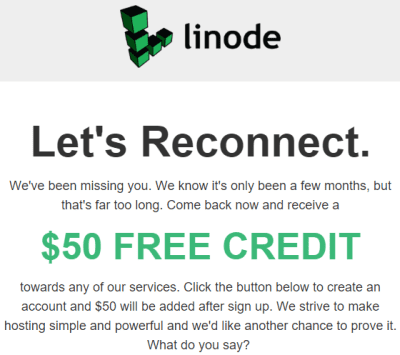Remind Customers of Good Times and Win Them Back with Re-Engagement Campaigns
 Consumer engagement has earned a place of focus in any sensible marketing campaign. Careful and competent as a marketer may be, some customers will fall off the engagement wagon, and that’s when you try to win them back with well-laid re-engagement campaigns.
Consumer engagement has earned a place of focus in any sensible marketing campaign. Careful and competent as a marketer may be, some customers will fall off the engagement wagon, and that’s when you try to win them back with well-laid re-engagement campaigns.
Re-Engagement Campaigns
Let’s consider a hypothetical customer who has not displayed activity for the past six months – no purchases and no interaction with marketing emails or newsletters. Rather than letting this customer go, a better strategy is to bring him back to the fold with a re-engagement campaign.
A simple “We Miss You” email can be triggered if a customer has been inactive for six months. You could sweeten the pot by offering promotions and discounts; incidentally, consumers seem to love free shipping as compared to percentage discounts, according to a Retention Science report.
According to a Return Path study, re-engagement emails had a 12% open rate. However, (and this is the encouraging part) 45% of re-engagement email recipients read subsequent messages – even though most of them did not read the first email.
Mix it up for Maximum Impact and Reach
You don’t have to rely on email alone, use multi-channel marketing to come back on the customer’s radar. As you automate the triggering of the re-engagement campaign via email, perhaps also have another version in the form of a direct mail marketing campaign. Team your efforts with social media to widen your customer reach.
Characterizing Re-Engagement Campaigns

Re-Engagement email from Linode
Your campaign should be the result of thorough research and understanding of user behavior.
- Conduct a targeted campaign. Utilize your information on the customer to create targeted, personalized, dynamic content that your re-engagement email can carry.
- Use multi-channel marketing.
- Don’t just rely on sales pitches, but also offer meaningful mailings that have real value to the customer.
- Be flexible with your strategy. For example, clients who open the email but don’t confirm can be categorized differently, compared to recipients who neither open nor confirm the email.
- Stand out with a catchy email subject and a clear call-to-action.
- Watch your email frequency. Bombarding consumers with mail they don’t want is a sure-fire way of ending up in spam filters.
- Learn to let go. Reduce the frequency of emails to recipients who consistently avoid engagement – perhaps also move them to a separate list. If you still weren’t able to elicit a response for a long duration in spite of consistent efforts, you can consider scrubbing them from your email list.
- When consumers unsubscribe, request reasons for unsubscribing. This will enable you to add more teeth to your campaigns.
Successful consumer engagement increases brand loyalty, enhances customer life cycle and effectively converts customers into brand advocates. Reach out to see how marketing automation can benefit your business.
